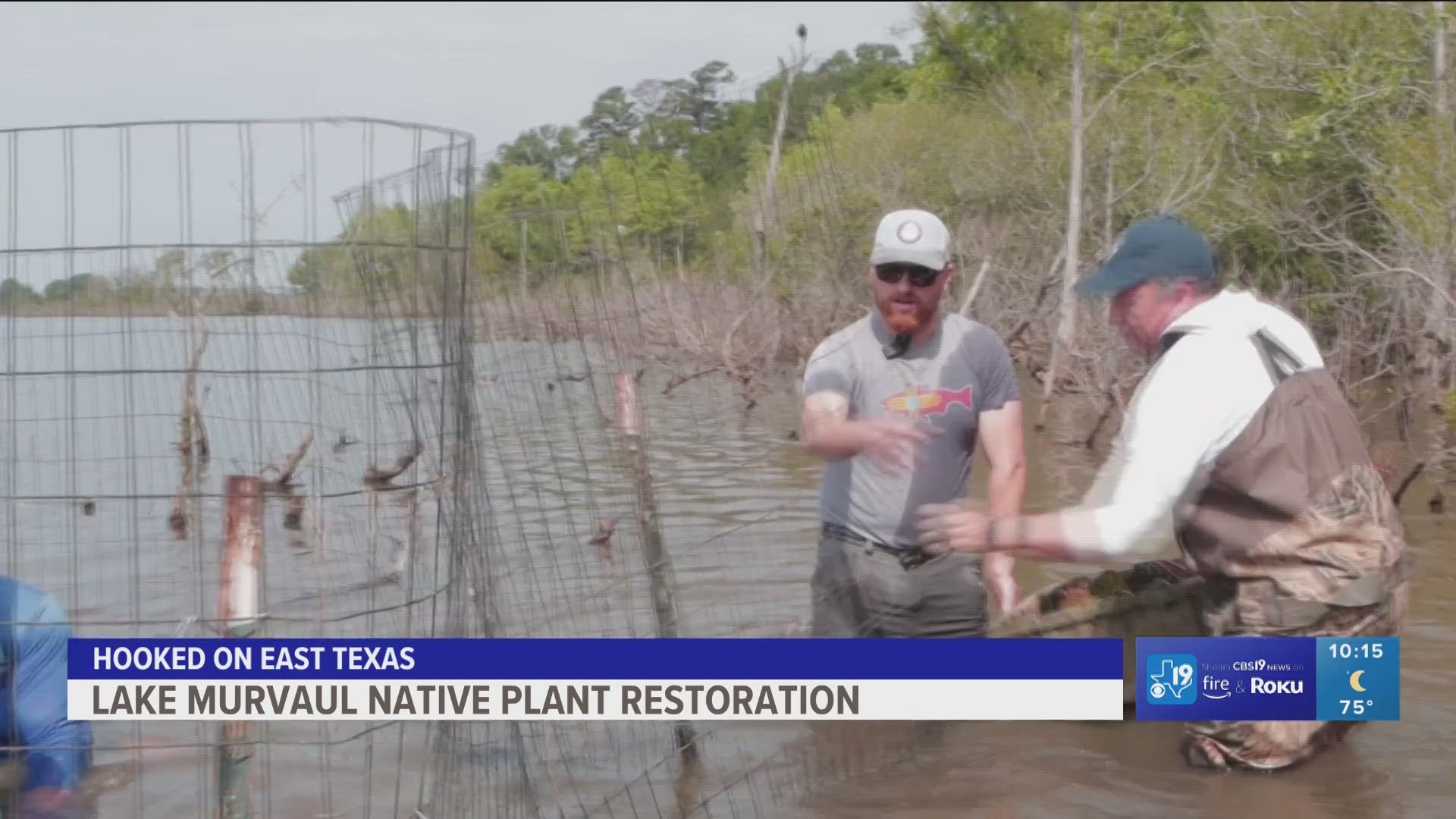CARTHAGE, Texas — This week’s Hooked on East Texas takes us to Lake Murvaul in Panola County. That’s where a native plant restoration project is underway to show it’s not the life of the lake, but the life in the lake that makes all the difference.
It’s what you don’t see that’s getting all the attention at Lake Murvaul. What's missing is plant growth that made this Panola County lake a haven for bass anglers.
“Lake Murvaul’s been a destination for trophy bass fishing for a very long time," said Inland Fisheries Marshall District Supervisor Tim Bister.
Sammy Peace, Lake Murvaul board president, has helped with the project in the past and remembers how the lake used to be.
“Our west end of the lake was just covered in Hydrilla and lily pads and all at once its gone, so your bait fish have nowhere to hide," Peace said.
Texas Parks and Wildlife biologist Quinton Dean added since about 2015 after some salvinia treatments along with some droughts and other things, the lake lost quite a bit of vegetation. He said this is an effort to help restore the plant life.
The effort is a native plant restoration project paid for by the Habitat and Angler Access Program. A portion of fishing license sales funds HAAP through grants from Texas Parks and Wildlife. The money pays for a native aquatic plant nursery built on the lake’s shoreline.
"We have twelve tanks here that we’re trying to grow native vegetation in order to establish it in the lake,” Dean said.
The plants grown in these tanks are taken out to a handful of grow cages that dot the shoreline.
We rode along to check the progress and got our hands dirty helping transfer plants from nursery to the lake.
“We’re pretty much going to pull the whole root mat up, separate a little bit of the natural sediment and drop the whole thing in there", Dean said as he demonstrated how to transfer the plants into the lake.
The project started four years ago. The first plants established are considered founding colonies. The hope is these plants thrive and expand. Biologists and technicians are planting several kinds of vegetation.
“Our goal here is to have a diverse community of aquatic plants, not just emergent but to have many types on Lake Murvaul," Dean said.
On our trip to Lake Murvaul, we checked out several vegetation cages. We saw one with pickerel weed in it and the fencing is around it to keep out turtles and other things that would eat the vegetation.
It appears to be working.
We saw cages where pickerel weed is thriving. That's evidence the project is moving in the right direction. After checking out the cages and vegetation, we cut some plants to take back to the shoreline, the native plant restoration nursery.
Back on shore, we take pulled plants and put in new pots. Later this year TPWD and volunteers will plant these in more areas of the lakeshore. The ultimate goal is to restore 25 to 40% of the shoreline with plants.
“So that would be the ultimate goal us to get to that number. We’re not there yet and really we’re not going to be able to get to that 25 percent or even 10 percent mark just on our planting efforts alone," Dean said.
Biologists are hopeful plants already in the lake spread naturally, but this effort is a step in the habitat restoration effort.
“We have a good prey base here and as we improve the habitat here, the prey base will improve along with it. It should be a perfect mix of everything here to keep this well-known trophy bass fishery going" Bister said.
A lot of this project is weather dependent. We'll be checking back with Texas Parks and Wildlife and the Lake Murvaul board to see how the restoration efforts are going.

